Jasper Park Lodge was the first course I wrote about when creating my own personal blog in 2012. Not only is it the single most influential golf course in my ongoing obsession with golf course architecture, but also among the most important projects in Canadian golf history.
It was the first of Canada’s ‘golden age elite’ that I had the privilege of playing, which (obviously) resulted in a limited understanding of what I was seeing. At the time, I didn’t understand why Jasper Park Lodge changed my perspective of golf course design; it just did.
I played the course as many times as possible while the junior rate was available to me, then set off to play anywhere and everywhere throughout my 20s. It wasn’t until late 2020 (a few years after completing the entire top 100) that I revisited Jasper Park Lodge.
While I expect to have several supplementary posts for this course over my lifetime, I wanted to get this first one in ASAP as a way of recording my thoughts. From my time retracing steps on these sacred grounds, reading about the course’s origins, and viewing maps from the 1920s, I’ve come to a few realizations that I don’t believe have ever been documented. Most recently, I did not see any mention of the following ideas in Ian Andrew’s book “In Every Genius There’s a Little Madness” (a read that I highly recommend).
Unlike many American counterparts of his era, Stanley Thompson is not known for creating template holes—holes on different golf courses that clearly follow a recurring visual and/or strategic theme. Charles Blair Macdonald was the first to normalize this practice, later carried out by his associate and further by Raynor’s associate, Charles Banks. Many of the Macdonald/Raynor templates are still frequently constructed today. Lesser architects will even emulate them unknowingly, due to their prevalence in the golf world.
Thompson was more inclined to craft 18 unique holes, as he and no others had seen before. He was a master at utilizing the terrain, allowing nature to shape his golf courses. Thompson simply identified the holes that were already there (and added some of the most artistic bunkering the world had ever seen). Though he was a proponent of variety within each golf course (par 3s of varying length, par 4s of varying challenge/opportunity, par 5s with varying risk/reward, etc.), he did not recreate holes on different golf courses. However different each creation is, each is uniquely and undeniably his. This is part of what makes playing a Thompson course for the first time particularly exciting.
While Thompson did not continuously recreate ‘template’ holes, he did unquestionably draw inspiration from the world’s greatest existing golf courses at the time. In roughly 100 years since Thompson began building golf courses, public opinion has evolved. Golfers are now more likely to identify a “short” par 3 (a wedge/short iron to a heavily contoured green with penal surrounds) or a “cape” par 4 (a mid-length hole doglegging softly to a green surrounded by hazards on 3 sides) given their popularity and prevalence. In the age of photography-guided architecture, both tend to (not surprisingly) be beautiful holes.
However, in the early 1900s, St. Andrew’s 11th hole (Eden) was considered to be the ideal par 3. A mid-length one-shotter to a green sloping sharply back to front, with a collection area at the rear of the green (leaving a dreadful 2nd shot if missing long off of the tee). The Eden hole, named after the River Eden which frames St. Andrews 11th, includes three bunkers: Hill (left flank), Strath (fronting pot bunker) and Cockleshell (large bunker short of the green). A 4th bunker (Eden) is often included on re-creations in place of the depression to the rear.

Though not as photogenic from the tee as its modern counterparts, the Eden hole was so strategically strong that CB Macdonald adopted it as one of his template holes; nearly every Macdonald course includes a reinterpretation of this hole. In fact, it was so commonly created that there is fierce debate as to which Eden is the best (aside from the original, of course). The debated Edens are all in the USA, with the vast majority in the northeast.
Let me add one more to the conversation: the 12th hole at Jasper Park Lodge.
I believe I am the first person to identify this hole as an authentic adaptation of the Eden hole. It’s not surprising that others before me have not made this connection because Thompson has never been known to have built template holes; the most commonly used tee box on Jasper Park Lodge is not an original tee, and substantially changes the angle of the tee shot (thereby, the perception of the hole; the Cockleshell bunker is rarely used in American renditions, thus altering the common perception of an Eden’s appearance.
Ironically, the fact that JPL’s Eden is so visually different from all (but 1) of the Edens in the USA is what makes it so good. In fact, it may be the single most authentic golden era re-creation of the hole in North America… accepting that it is a mirror-image, or reverse-Eden. The characteristics of the hole are unmistakable.

While much more apparent when walking the land, the satellite image clear shows the distinct Strath and Cockleshell bunkers (now to the left) and the Hill bunker to the right. As with all North American Eden holes, there is an Eden bunker to the rear in place of a deep swale. When you walk to the current tee, the Cockleshell bunker looks out of place… it’s no wonder it was intended to be more in the golfer’s line of sight.
There are several reasons why I have absolutely no doubt that Stanley Thompson intended for this to be his adaptation of the Eden.
- Thompson had a huge appreciation for the links courses of the UK, and (though I’m yet able to confirm his travel logs) toured many while serving in the Canadian Armed Forces during WWI.
- Thompson greatly admired the National Golf Links of America, and viewed it as a modern masterpiece. The golf course was the origin of CB Macdonald’s template holes—a collection of what he believed to be the best holes in the British Isles—which he would reuse on each golf course. Macdonald’s Eden hole at NGLA, visually, is the most similar to the Eden hole at the Old Course (although the green lacks the severity needed to make it a standout hole). I can’t possibly fathom Thompson creating a hole that so closely resembles TOC #11 and NGLA #13 without intent.
- If there is anything Thompson was known for, it was his larger-than-life personality; his nickname ‘The Toronto Terror’ was earned. Those with knowledge of some famous Thompson tales (tree clearing at Capilano, bunker shaping on JPL #9—Cleopatra, and strong-handing the CPR to expand his budget for Banff Springs) would expect nothing less than some one-upmanship… even when it came to someone who Thompson revered as much as CB Macdonald. Given the dullness of the green at NGLA’s Eden, as well as somewhat underwhelming bunkering, I believe Thompson wished to build his own ‘ode to St. Andrews’ with more authentic features.
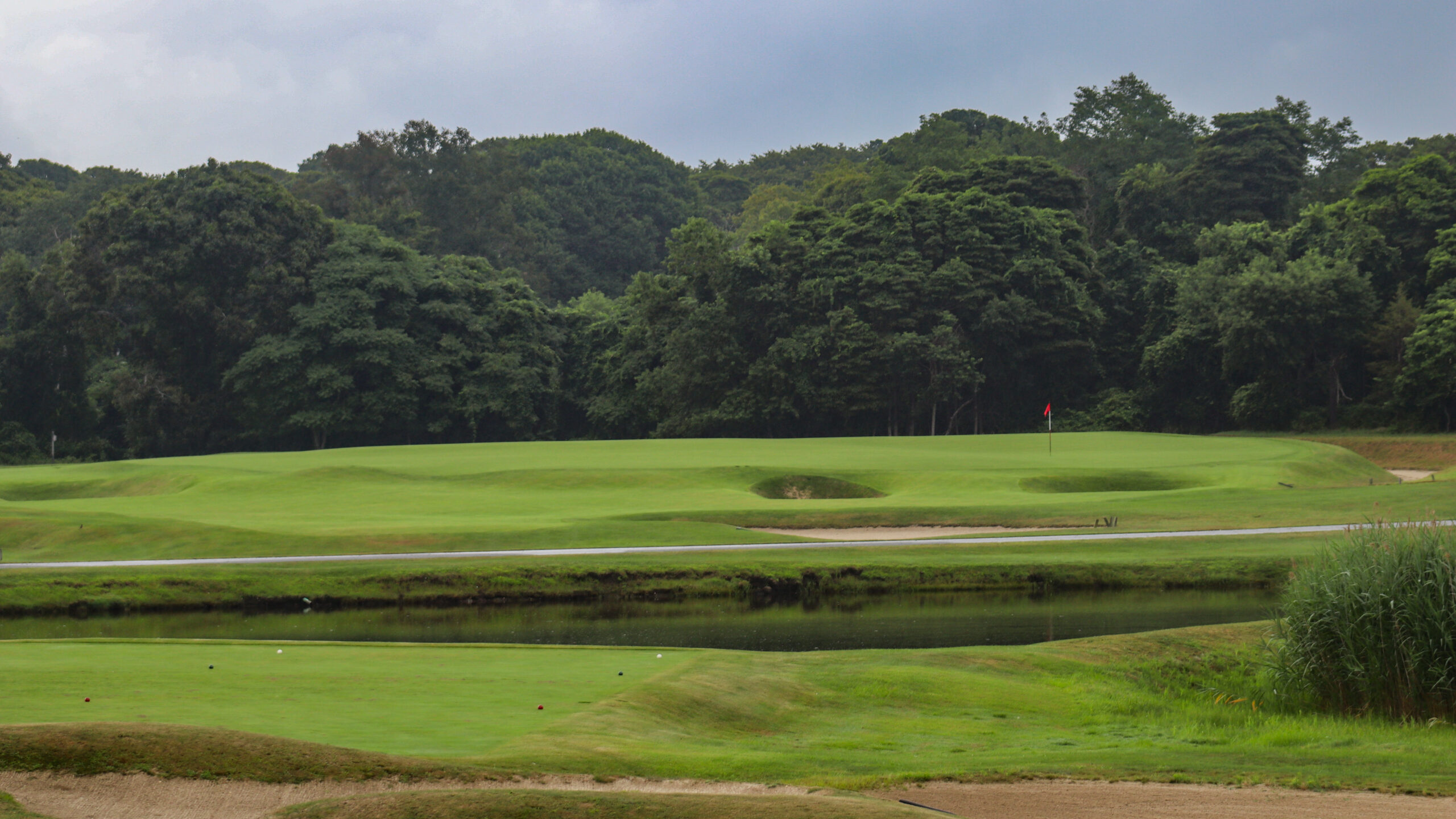
The Eden at The National Golf Links of America
If one has any suspicions as to the resemblance between the current hole and the original Eden, consider the two images below:
- Jasper Park Lodge’s plan as drawn following construction in 1925 (from Ian Andrew’s “In Every Genius There’s A Little Madness”)
- Amended Jasper Park Lodge blueprint, 1929 (from Ian Andrew’s “In Every Genius There’s A Little Madness”)
Stanley Thompson’s original rendering of the 12th hole bears a remarkable resemblance to NGLA’s Eden hole. Note the original tee position, playing ACROSS the Cockleshell bunker. Also note that there was originally an Eden bunker marked to protect the back of the green (in lockstep with North American Edens). Whether the Eden bunker was originally built: I am doubtful, but don’t know for certain.
With the tug-of-war between Banff Springs and Jasper Park Lodge in the mid-late 1920s, Thompson was brought back shortly after completion of the course to add artistic flair and character to the originally simple looking Jasper course (in an attempt to out-do Banff’s dramatic features). Bunkers were re-carved with mounding added throughout the course, often to mimic the mountainous vistas. As visible in the above 1929 map, there is no Eden bunker behind the green, but rather a deep depression. I believe that Thompson’s original plan for the hole was heavily influenced by the National Golf Links. An amendment was made shortly thereafter (removing the 4th bunker and adding character to others) to pay homage to the Eden at St. Andrews.
As seen on the earlier Google Maps satellite image, the rear Eden bunker has been added in accordance with the original course map. While I prefer the authentic 3-bunker configuration, the Eden bunker is an 8′ deep show-stopper.
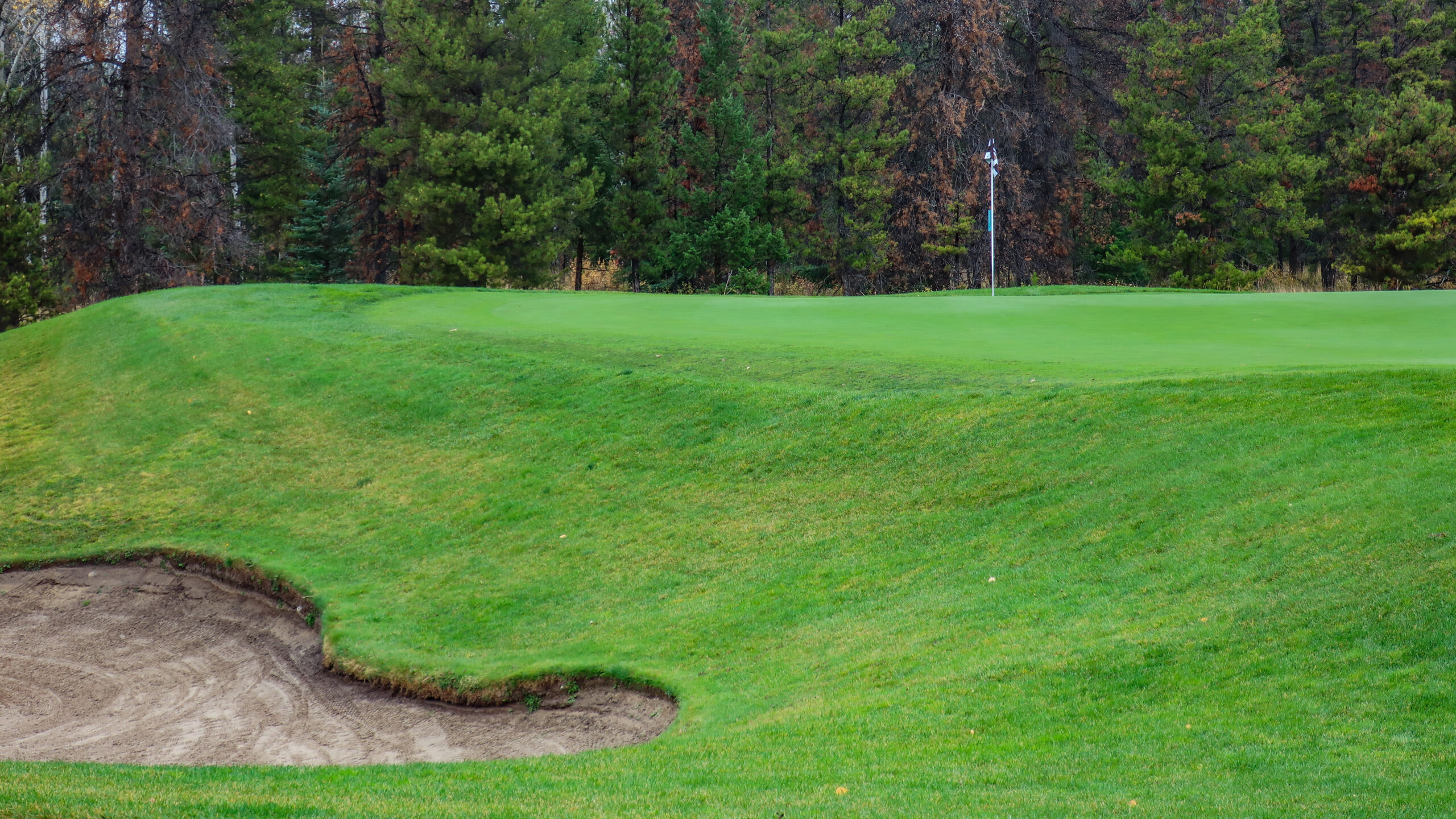
The Eden bunker at Jasper Park Lodge
Given the strong contouring of this green relative to the Eden at the NGLA, I believe the 1929 variation of Jasper Park Lodge’s 12th not only was a (reverse) Eden… I’m confident it was the single most faithfully re-created North American Eden of the early 20th century.
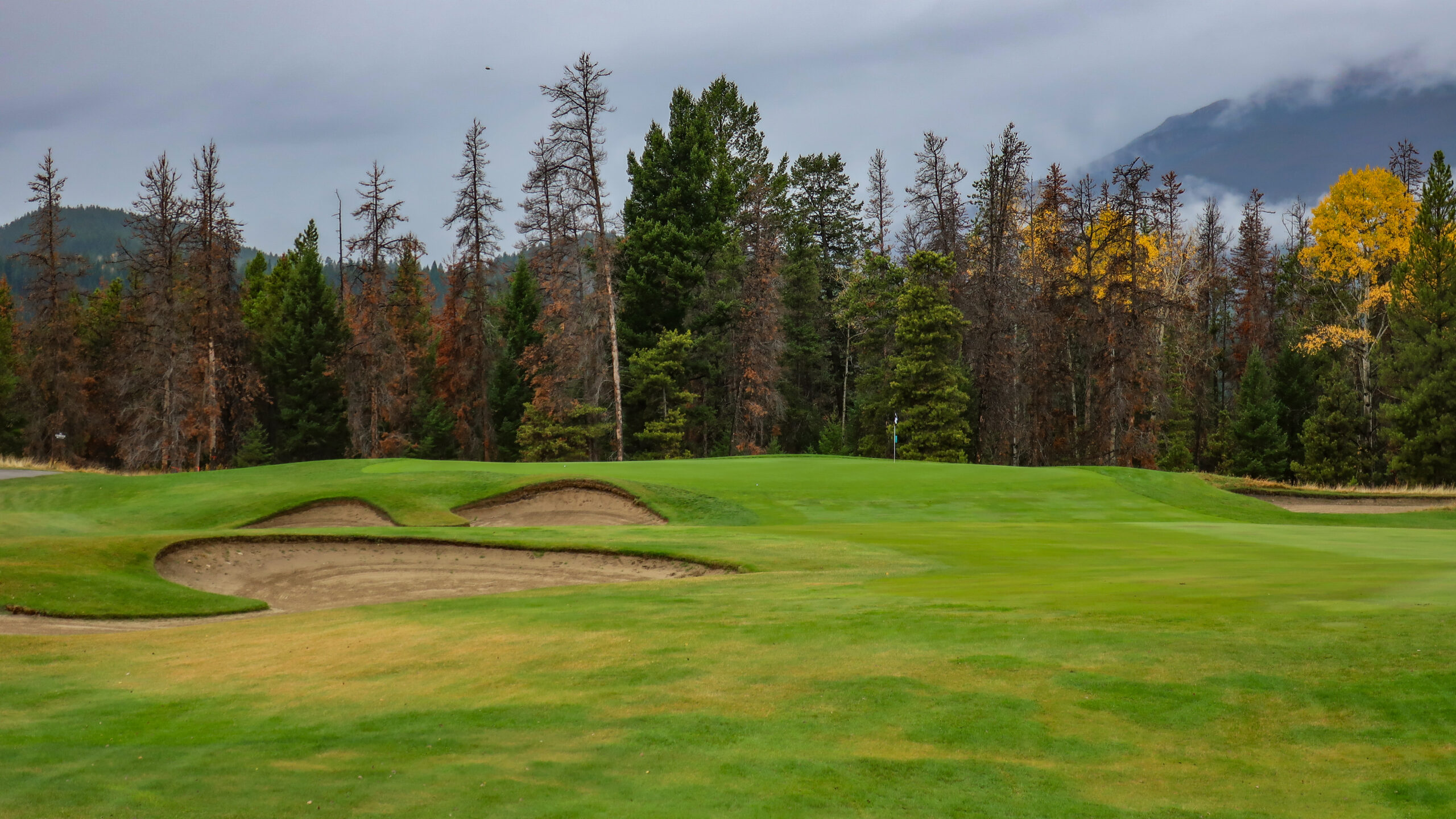
The line of play on the 12th at Jasper Park
While I wanted to make sure to publish this particular article ASAP, I have two others that I intend on writing in coming weeks regarding other holes at JPL. The first is an in-depth follow-up to a brief write-up I did for SCOREGolf magazine in 2020 about the ‘Cape’ 14th hole. Given that I have already published my understanding of this hole as another out-of-character template variation, it was a less urgent blog entry than this one. Lastly, there is one other hole at JPL with strong Old Course/NGLA origins that I’m eager to dive into. Which one? Guess in the comments, and it might come soon.


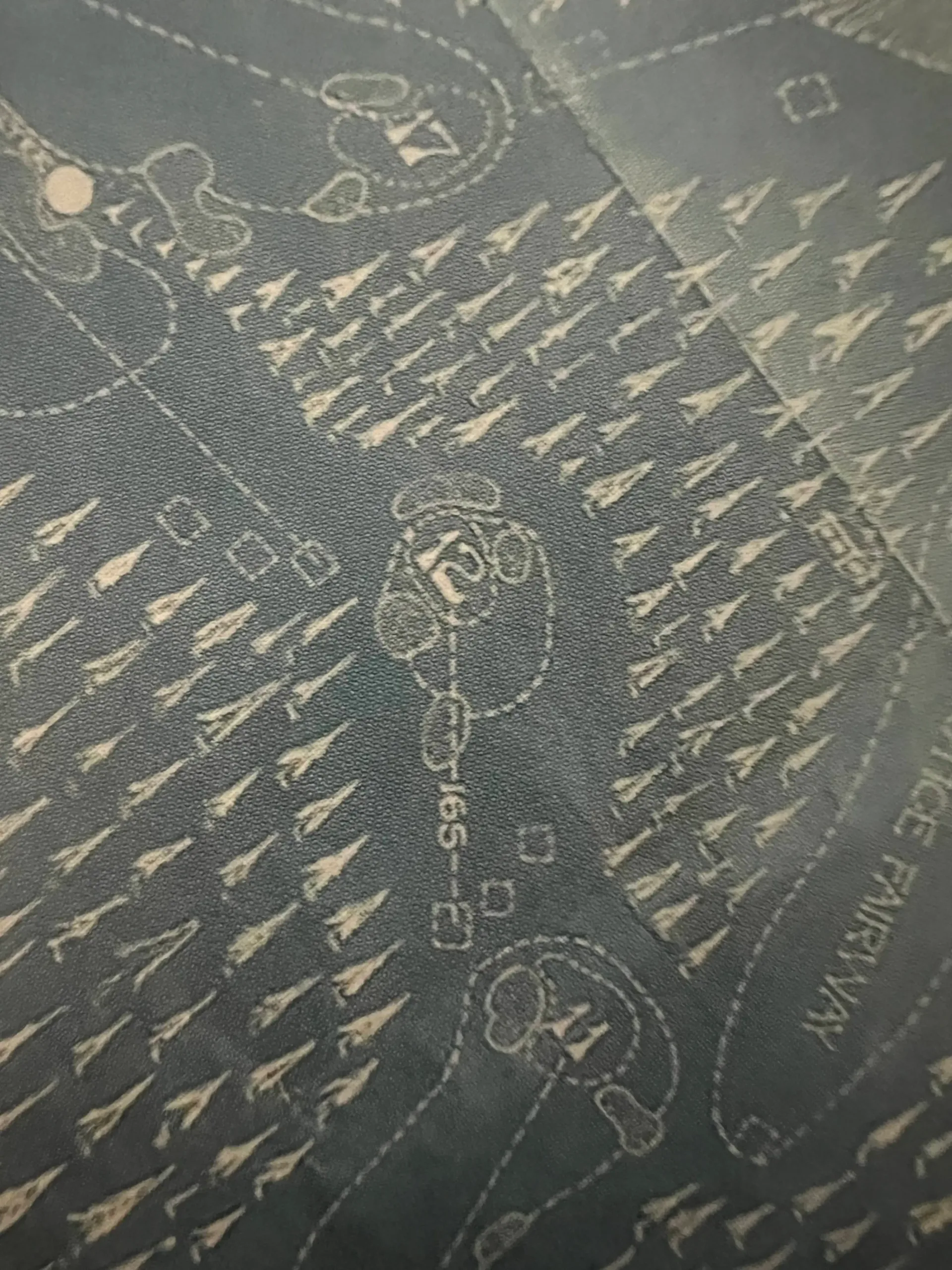
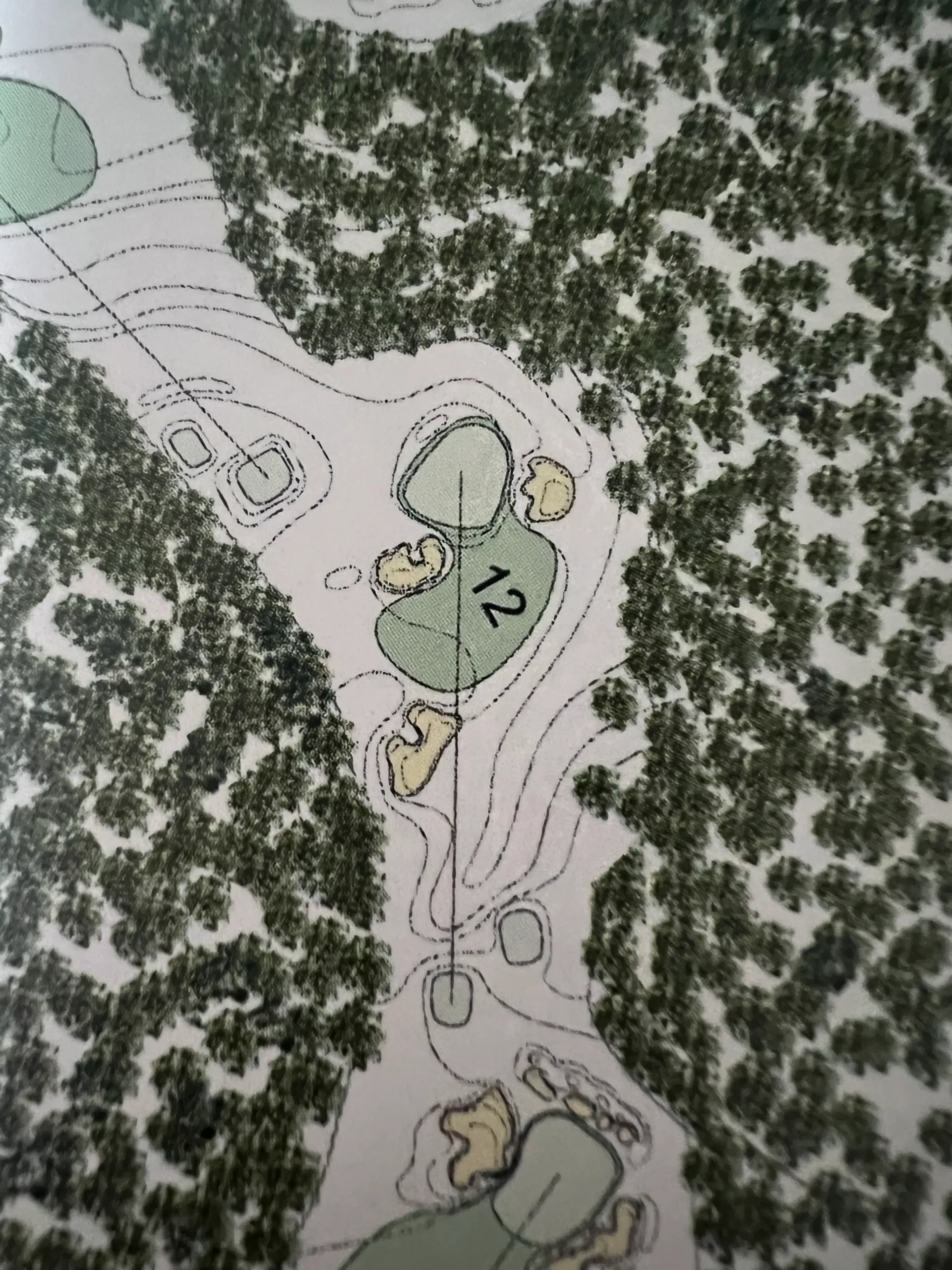



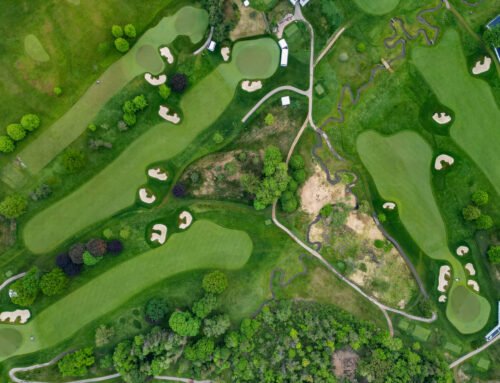
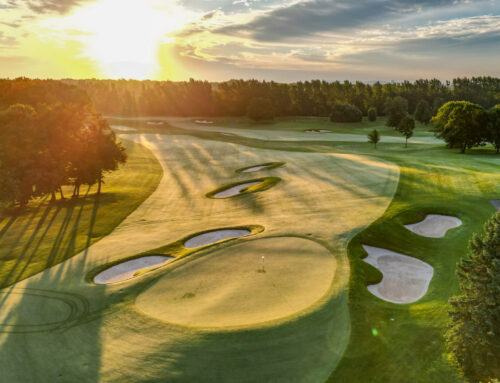
Leave A Comment